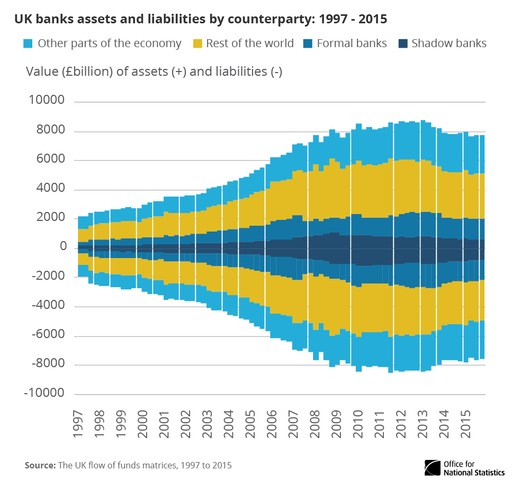Economy The behaviour of the UK financial sector from a flow of funds perspective between 1997 and 2015, with a specific focus around the 2008 global financial crisis. The 12-month growth rates of consumer prices, and producer input and output prices increased in August 2017, from the rates in July 2017. Clothing prices annual growth rate has been trending upwards in 2017 and may reflect exchange rate changes and growth in clothing manufacturers' input costs. Food and energy continue to contribute positively to headline inflation but the difference between core inflation and the headline rate has been narrowing. Rental prices have shown the most growth in London and the South East since 2009, outstripping growth in national average wages. The annual rate of inflation for goods leaving the factory gate increased for the first time in 6 months in August 2017. Factory gate prices (output prices) rose 3.4% on the year to August 2017, up from 3.2% in July 2017, with the change in the rate being driven mainly by petroleum products. The Consumer Prices Index including owner occupiers' housing costs 12-month inflation rate was 2.7% in August 2017, up from 2.6% in July 2017. Rising prices for clothing and motor fuels were the main contributors to the increase in the rate between July and August 2017. Air fares also rose between July and August but the rise was smaller than between the same two months a year ago and so resulted in a partially offsetting, downward contribution. The Consumer Prices Index (CPI) 12-month rate was 2.9% in August 2017, up from 2.6% in July 2017. This is a high-level summary of the UK House Price Index (HPI). For full details, including commentary, historical data tables and analytical tools please see the main publication of the House Price Index, published today (12 September 2017) by HM Land Registry on the GOV.UK website. Private rental prices paid by tenants in Great Britain rose by 1.6% in the 12 months to August 2017; this is down from 1.8% in July 2017. Owner occupiers' housing costs (OOH) in the UK under the rental equivalence approach have grown by 2.0% in Quarter 2 (Jan to Mar) 2017 compared with the corresponding quarter of the previous year. OOH according to the net acquisition approach have grown by 2.5% in Quarter 2 2017. OOH compiled using the payments approach experienced growth of 0.5% in Quarter 2 2017. Understanding financial crises – What we know and what we're doing On 14 September 2007, Northern Rock became the first UK bank in 150 years to suffer a bank run. This is typically seen as the first sign of the Global Financial Crisis beginning to unfold in the UK. As we approach the 10th anniversary of this landmark moment, ONS has published analysis of its new 'Flow of Funds' data showing just how the risks built up in the run-up to the crisis. Here, Richard Campbell explains in more detail:  People, population and community Weekly death figures provide provisional counts of the number of deaths registered in England and Wales in the latest weeks for which data are available. | 
No comments:
Post a Comment